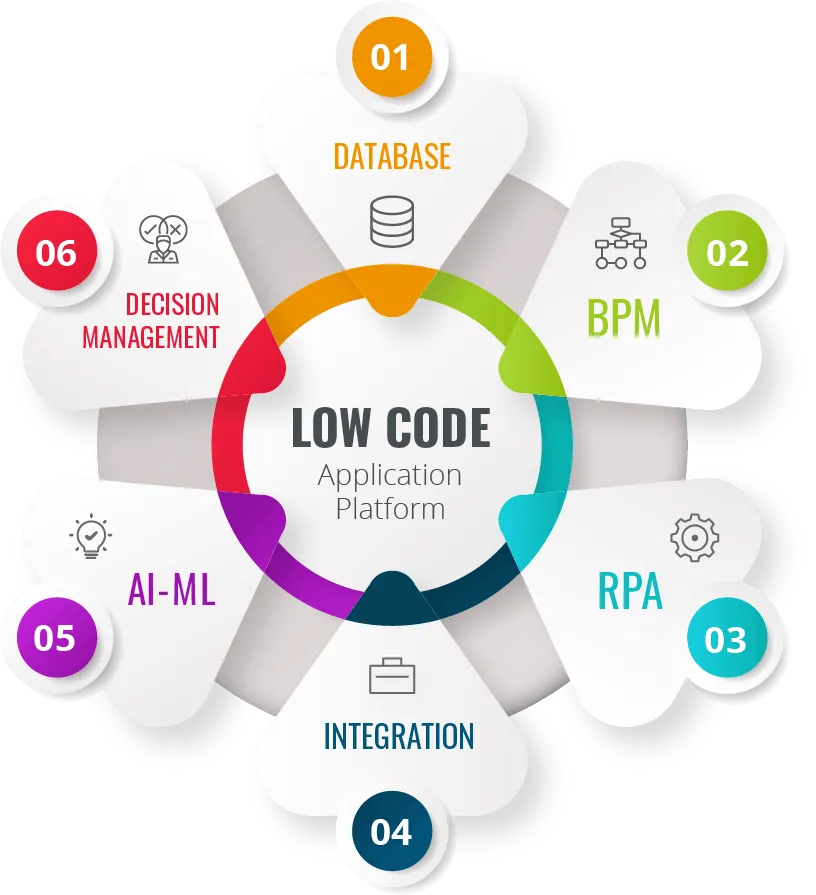Agile and DevOps need Low-Code tools
Blog: AuraQuantic Blog
Agile and DevOps both require low-code tools to be implemented so that companies can leverage their full potential and as a result become more competitive.
Digital transformation is not an end but a means, and therefore there is a starting point, but not an endpoint. It is a continuous journey, which companies must follow, constantly striving to improve their processes, eliminating inefficiencies, and maximizing benefits to remain competitive, bearing in mind that for each process there will always be a newer and more efficient way of doing things.
THE VALUE OF AGILE METHODOLOGY FOR DEVELOPMENT
Agile methodology has changed the way we understand software development. In fact, it is not a methodology, but rather a philosophy that involves a different way of working and organizing. Although it is true that it is supported by various methodologies such as SCRUM, XP (eXtreme Programming), etc.
Before the introduction of Agile, companies relied on linear methodologies (cascading or “waterfall”) that greatly delayed the delivery of the final product. In addition, they didn’t consider input from the end user until a very advanced stage of development, which meant that there was a high risk that the software delivered would not meet the customer’s real needs.
In 2001, seventeen critics of process-based software development improvement models met in Snowbird (Utah), invited by Kent Beck, publisher of Extreme Programming Explained, to discuss software development techniques and processes. They created the term “Agile Methodology” to define methods that were emerging as an alternative to formal methodologies, which they considered too heavy and rigid due to their standardized nature and strong dependence on detailed pre-development planning.

The new model that emerged from this initiative advocates continuous improvement in which planning, creation, testing and improvement are carried out with reduced delivery times, putting the needs of the end user first. The end user now works closely with the development team.
Agile and low code share the same general objective, which is none other than a better way to develop software.
AGILE BETTER WITH LOW-CODE
Low code is a tool that was born under the umbrella of Agile methodologies with the aim of becoming the tool that puts the Agile mentality into practice.
The basic idea that prevails in all low-code tools is that the end user can participate in the process of creating the application they need.
It is based on the idea that the lack of communication between the IT department and other departments is a mistake, and that facilitating the development through visual interfaces will help greatly in promoting collaboration between all departments.

A low-code tool and an Agile approach allow you to respond quickly to changes. Applications change and evolve continuously during the development process, and when in production.
The strategy is to make something work fast, and then to continue working. There is nothing better than running software to know what works and what doesn’t. A low-code tool whose development model is based on process workflows, together with its wizards for rapid development, accelerates the process and allows us to continue evolving our software solutions to adapt and respond to new needs.
We implement an agile methodology when we are facilitating collaboration in every step of the process, and we are creating solutions that allow us to have control over our activity.
A low-code, scalable platform that enables installation on cloud and facilitates changes is a critical part of this process.
THE VALUE OF DEVOPS FOR SOFTWARE DELIVERY
So far, we have talked about software development but what about delivery? Is this still in the hands of the development department and the operations team?
When we talk about change it is necessary to reduce the risk associated with the change. DevOps was born as a solution to this problem and its objective being that the development and operations teams collaborate to create, test, deploy and monitor applications with speed, quality and control.
Initially, DevOps focused on the operations teams providing feedback to the development and quality teams. But today the concept has changed, and the benefits of feedback are intended to reach the entire organization.

The main idea is that new applications reach the end user in a safe and efficient way. For example, Google or Facebook use a technique called Feature Flag-Driven Development, which basically consists of not launching the new functionalities to a 100% of the users at once. First it is launched with 1% of the users, then 10%, then 30%, etc., with the possibility of activating and deactivating it in a simple way if something is not right. It is also possible to launch different variations of the software focused on different sectors or types of users with this technique.
it is also possible to launch different variations of the software focused on different sectors or types of users.
Agile better with DevOps
Just like Agile, DevOps has its best ally in low-code, and users with technical and non-technical profiles can intervene in the launch of new features of applications in production using visual assistants with full independence from the development and operations teams.
Low code and DevOps take the Agile methodology a step further, since it not only focuses on development, but also on the business and its objectives, allowing the company to respond faster to its daily challenges and be more competitive.
The post Agile and DevOps need Low-Code tools appeared first on AuraQuantic.
